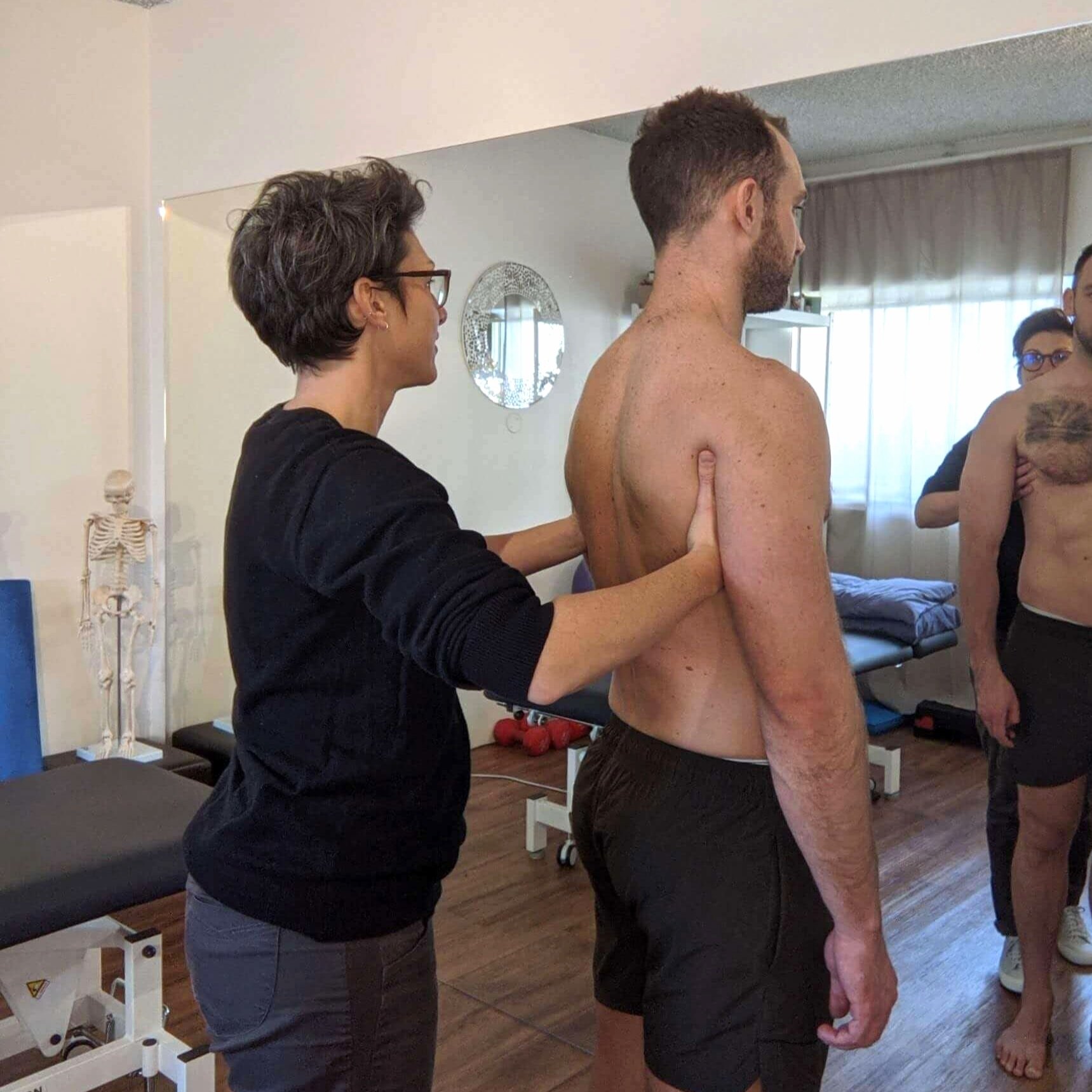
Ribcage And Spinal Pain
The ribcage is made up of 38 bones, lots of strong ligaments and is a major area of muscle attachment. It’s a complex part of the body and can be a significant source of pain.
Traditionally, the ribcage has not been well understood (or treated) by physiotherapists. It was presumed to be inherently stable and would be mobilised, but had no more attention paid to it. The truth is, the ribcage is very mobile and it accounts for 30% of our body mass which is why it can be such a contributor to injury.
Ribcage treatment was revolutionised by Canadian Physiotherapist Dr LJ Lee who developed the Thoracic Ring Approach™. Dr Lee developed a robust assessment technique and treatment tools to identify dysfunction of the ribcage and to restore its optimal movement. Not only have our physios done extensive training in the Thoracic Ring Approach (and Dr Lee’s greater whole-body approach ConnectTherapy™), they have worked in Dr Lee’s own clinic in Vancouver, alongside and learning from some of the best physios in the world.
Common Rib and Spine injuries We Treat
Costochondritis
Scoliosis
Sprained ribs
Clicking ribs
Sprained facet joints
Thoracic Outlet Syndrome
Breathing pain
Pregnancy related rib pain
Rib fracture recovery
Tight and sore upper back muscles
Poor activation of the upper back muscles
Slouched upper body posture (kyphosis)
And Did you know that Ribcage Dysfunction can also cause Nausea, Abdominal wall pain, Bloating and Anxiety?
Ribcage Injury Treatment At Move Mountains Physio
Local assessment of your ribcage alignment and function to identify the cause of your pain.
Whole body assessment to determine the root cause of the problem e.g. is it your ribcage or is your ribcage compensating for a twisted pelvis?
Educate you on the cause of your injury and important postural and movement changes you need to make to ease your ribcage or spinal pain and allow your body to heal.
Quickly take away your pain with hands-on treatment or by teaching you self-release techniques and mobility exercises that you can do to relieve your own pain.
Teach you exercises to activate and strengthen the muscles of the ribcage and spine that are causing your problems.
Improve your sleep by removing your rib pain and educating you on good sleeping positions for your situation.
Guide you through a personalised rehabilitation program to restore mobility and strength to your ribcage and spine and get you back to full function.
Assess your sports technique and equipment to determine if it is contributing to your ribcage pain and any changes you need to make.
Rib & Spinal injury Treatment At home
If you have an acute flare of ribcage pain, try a heat pack. Most ribcage pain is due to muscle spasm so it responds best to heat.
Take a look at our blog "How To Recover From An Injury Faster".
Posture is very important but “shoulders back” is never a good cue. Check out our Youtube video series on good posture.
Sit with a lumbar roll or rolled towel to help support your lower back arch. Avoid sitting slumped in the couch or working on a laptop. Take a look at this video to help you understand good sitting posture.
If you commonly think about activating your core muscles or bracing your abs day-to-day you need to stop! Your abdominal muscles attach onto your ribcage and are likely making your pain worse. Check out these videos to understand more.
If you’re feeling upper back pain, avoid the temptation to stretch it out or release it with a ball. Most of the time, the pain you feel is the compensation so these aren’t the muscles you need to release. Try these stretches and exercises instead.
If you have a lot of ribcage or spinal pain, you may find you need to lie down but avoid curling in a ball. Lie flat on your back or with a pillow under your knees.
Try to stay mobile but avoid impact exercise. Try some deep breathing, gentle yoga, lying on an acupressure mat or going for a walk thinking about your new upper body posture.
Make a physiotherapy appointment so that we can identify the true cause of your rib injury or spinal pain and get you back on the road to recovery.
For quick ribcage and spinal pain relief book an appointment with one of our Ribcage And Spinal Injury Specialists either online or in our Jindabyne physiotherapy clinic
Or, if you’re still not sure, book in for a free 15-minute consult so we can discuss your ribcage injury and how our unique treatment approach can alleviate your ribcage pain.



